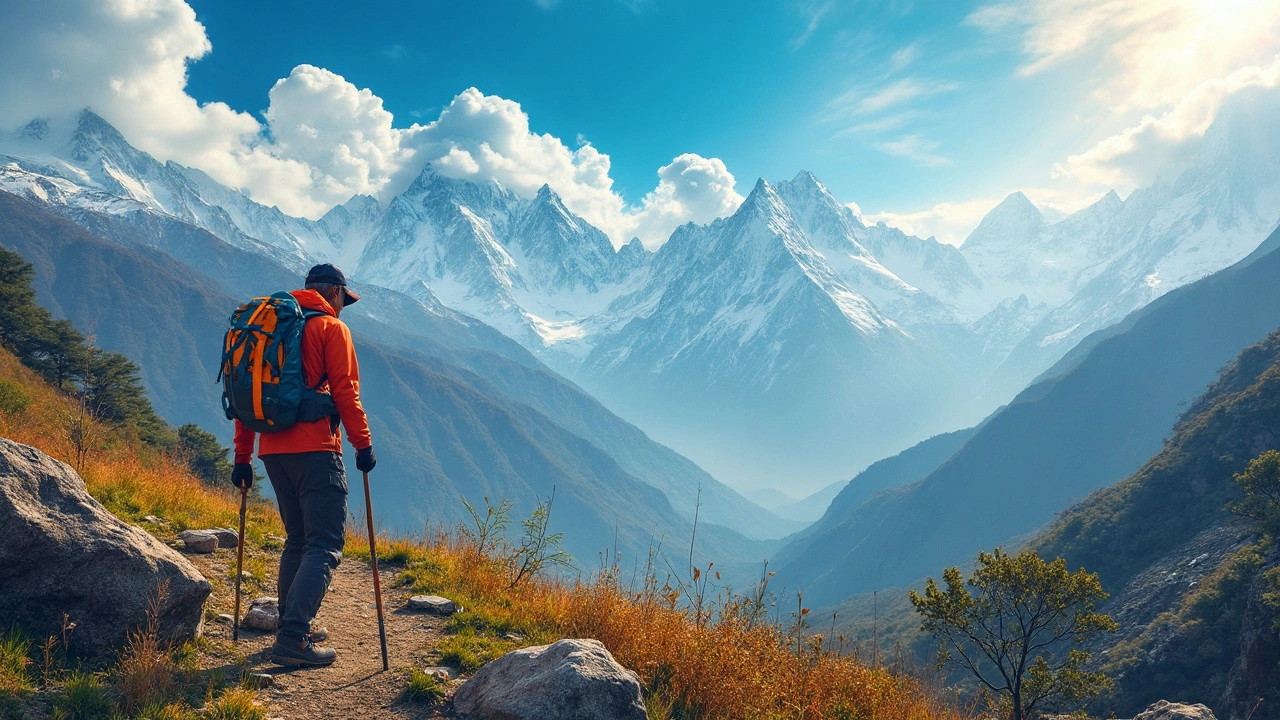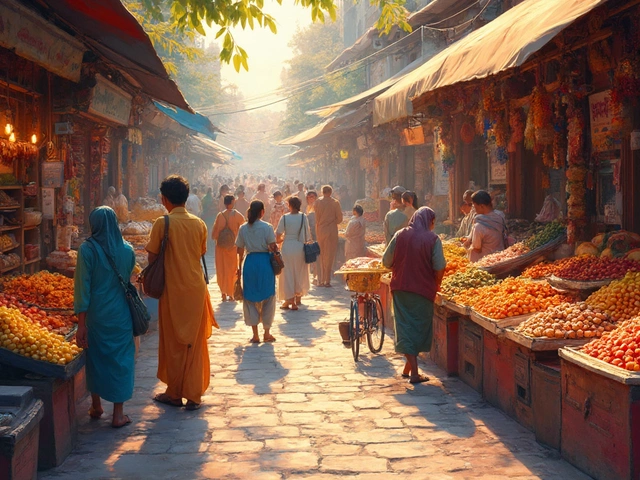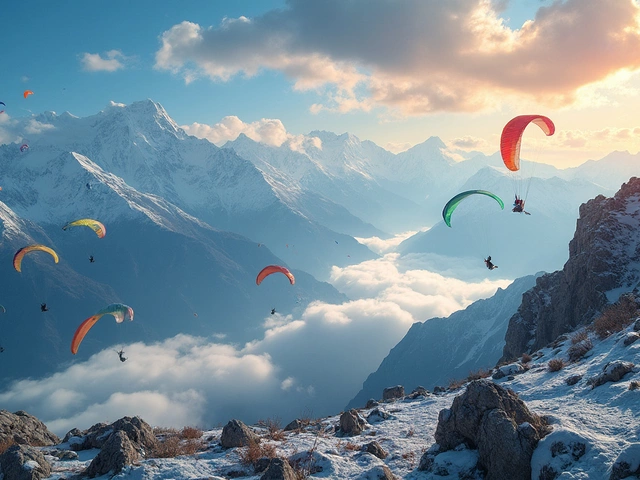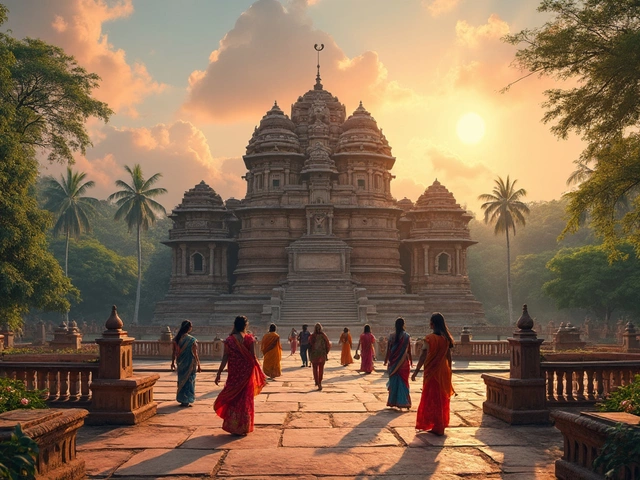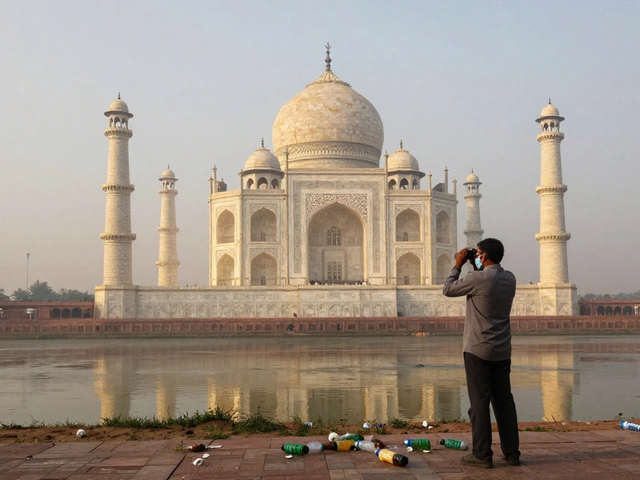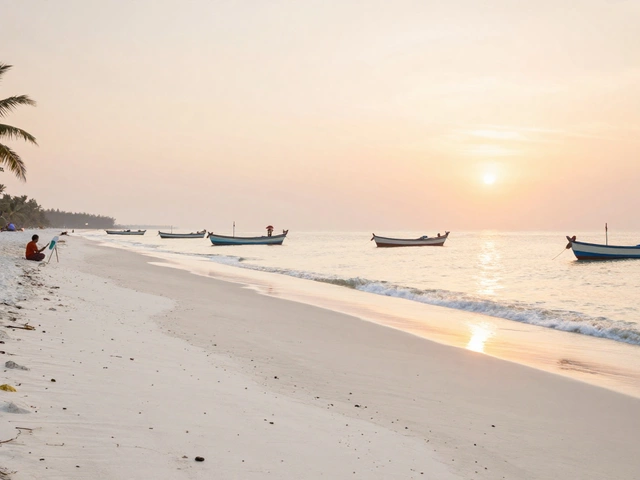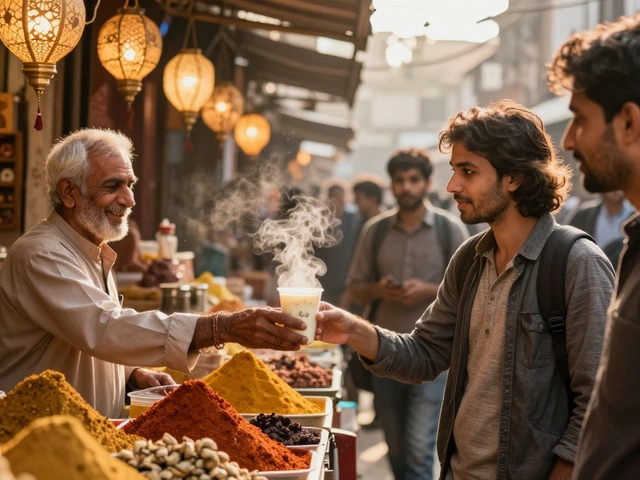When it comes to hiking, especially in a place as diverse as India, mastering the 3 layer rule can be a game changer. It's like building a perfect sandwich, where each layer has a crucial role to play.
The base layer, often underestimated, is all about moisture control. Think of it as your skin's best friend, wicking away sweat and keeping you dry. This one matters a lot, especially when trekking in areas like the humid Western Ghats. A good starting point could be a lightweight, breathable fabric.
Next comes the middle layer, which provides insulation. Imagine you’re heading up the chilly trails in Himachal Pradesh – you'll need that extra warmth. Fleece or a light down jacket does the trick without making you feel like a marshmallow.
The outer layer is your shield against the unpredictable elements. Whether it’s sudden rain in Meghalaya or winds in Uttarakhand, a water-resistant and windproof shell can keep you comfy and hiking longer.
- Understanding the 3 Layer Rule
- Layering Techniques for Indian Climates
- Practical Tips for Selecting the Right Gear
- Popular Indian Trekking Destinations
Understanding the 3 Layer Rule
The 3 layer rule for hiking is a simple yet effective strategy that can make your treks more enjoyable and safer, whether you are hitting the trails in the Himalayas or exploring the lush forests of the Western Ghats. It ensures that you're prepared for varying weather conditions by optimizing three main clothing layers.
The Base Layer: Your Second Skin
Think of the base layer as your closest ally in dealing with sweat. Made from materials like merino wool or synthetic fibers, it helps draw moisture away from your skin. This is key in avoiding that cold, clammy feeling, especially when trekking under a blazing sun or during a steep climb. This layer is essential for comfort and maintaining temperature as you hike through diverse terrains in India.
The Middle Layer: Insulation Powerhouse
Next up is the middle layer, which traps heat to keep you snug without bulk. The type of insulation you need varies with the season and altitude. Fleece jackets or down vests are popular choices, ideal for chilly mornings or high-altitude hikes. This layer helps you tackle places like the snow-dusted trails in Kashmir or cooler evenings in Sikkim.
The Outer Layer: Shield Against the Elements
Finally, the outer layer shields you from wind, rain, and snow, acting as your protective barrier in unpredictable weather. A good shell is usually waterproof and breathable, ensuring you stay dry while perspiration can escape. This can make all the difference when hiking in monsoon-prone regions like Meghalaya.
Layering Tips
- Versatility is key: Choose pieces that are easy to add or remove based on the climate.
- Focus on weight: Opt for lightweight but effective materials to avoid carrying extra bulk.
- Think about breathability: Ensure all layers allow air movement to prevent overheating.
- Look for packable options: Ideal for when you want to stash layers in a backpack quickly.
With the right understanding of the 3 layer rule, you can adapt to any condition mother nature throws your way while hiking in India. Whether the sun's blazing or a sudden rainstorm looms, these layers work together to keep you comfortable and safe.
Layering Techniques for Indian Climates
India offers such a wide range of climates that knowing how to layer for different regions can really make a difference in your trekking adventures. Let's break down a few popular scenarios and how the 3 layer rule can adapt to each.
Hiking in the Himalayas
The Himalayan regions are cold, especially during early mornings and evenings. Here, a thermal base layer is essential. Consider merino wool or synthetic options; these materials wick moisture and offer decent warmth.
For the middle layer, fleece is popular due to its lightweight warmth. In peak cold seasons, a down jacket could be more suitable. The outer layer should be robust—think waterproof and windproof. This area can surprise you with sudden snowfall.
Trekking in Western Ghats
The Western Ghats are humid and often wet. Here, moisture management is critical. A quick-dry base layer is your best choice. The middle layer can be lighter, like a thin fleece, since temperatures don’t drop as drastically.
A waterproof outer layer is a must to tackle frequent rain showers. Materials like Gore-Tex work well, keeping you dry without overheating.
Exploring Deserts in Rajasthan
Desert climates can be tricky—hot during the day, cold at night. A breathable base layer is necessary to manage sweat in the heat. For nighttime, a middle layer like a lightweight jacket helps in cutting the chill.
The outer layer here serves more as a barrier against sand and wind. Opt for a lightweight, breathable shell.
Here's a quick reference guide:
| Region | Base Layer Material | Middle Layer Type | Outer Layer Needs |
|---|---|---|---|
| Himalayas | Merino Wool | Fleece/Down | Waterproof/Windproof |
| Western Ghats | Quick-dry Synthetic | Light Fleece | Waterproof |
| Rajasthan | Breathable | Light Jacket | Wind Resistant |
Remember, no matter where you trek, the key is flexibility. Conditions change, and your gear should be able to adapt quickly. That’s the beauty of the 3 layer rule—it’s all about staying comfortable, regardless of what nature throws at you.
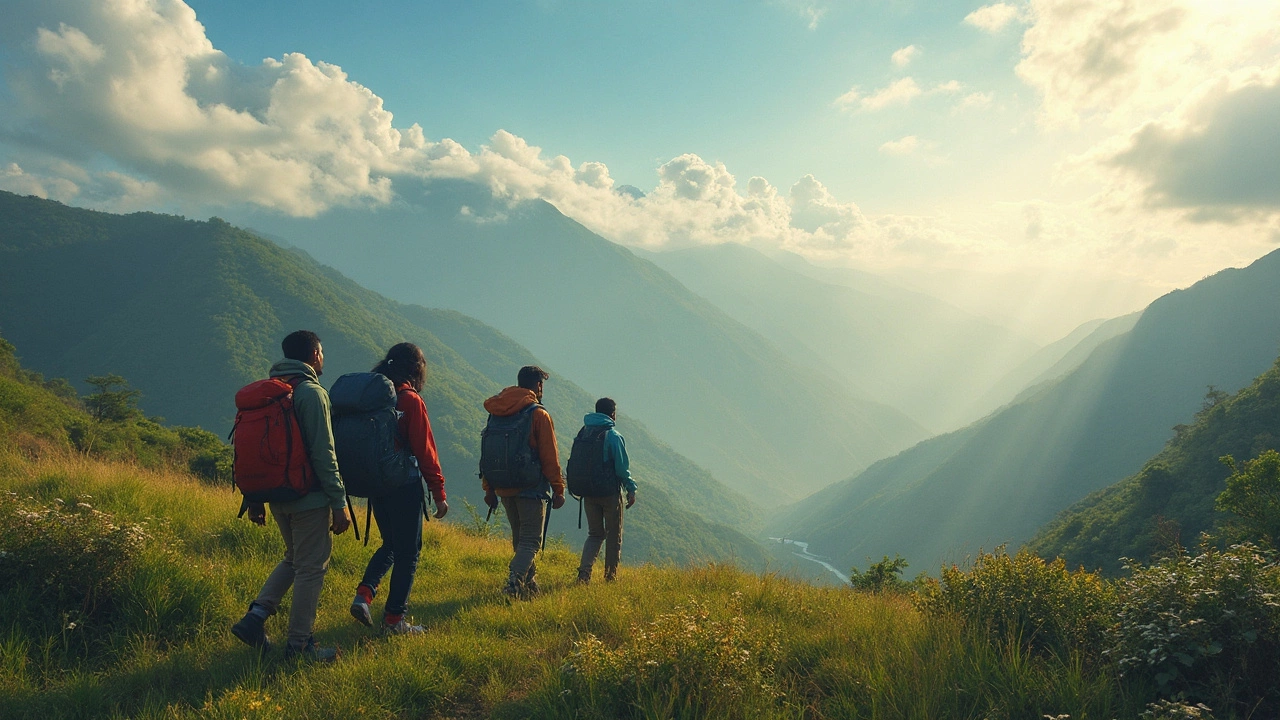
Practical Tips for Selecting the Right Gear
Choosing the right gear is like picking the right tools for the job. The better your gear, the more you'll enjoy your hiking experience in India. Let's break it down into some practical tips that keep things simple yet effective.
Base Layer Basics
For the base layer, look for synthetic materials or merino wool. These fabrics are excellent at moisture management, wicking away sweat and preventing that clammy feeling. If you're planning on trekking through warm areas like the Western Ghats, a synthetic t-shirt should do the trick.
Middle Layer Choices
The middle layer is all about warmth. A fleece jacket or a down vest can provide that much-needed insulation. When selecting your middle layer, consider the temperature variation. If you’re heading to chilly places like Leh or Manali, something more substantial like a thicker fleece could be your best bet.
Outer Layer Protection
The outer layer isn't just for the looks; it's your protection against wind, rain, and even snow in some places. A lightweight, packable jacket with a hood that's both water-resistant and windproof is ideal, especially in unpredictable weather conditions like those in the Northeastern hills.
Footwear and Accessories
Don't overlook footwear. A good pair of hiking boots can be a lifesaver on rocky terrains. Look for boots with good ankle support and a solid grip. As for accessories, a broad-brimmed hat and a pair of UV-protective sunglasses are must-haves for sunny excursions.
Gear List Essentials
- Backpack: A sturdy, comfortable backpack with chest and waist straps.
- Water Bottle: Preferably insulated or a hydration pack for easy access.
- Trekking Poles: Great for maintaining balance on uneven terrains.
To give you a sense of cost and options, here's a little comparison:
| Item | Budget Option | Premium Option |
|---|---|---|
| Base Layer T-shirt | $10 - $20 | $40 - $60 (Merino Wool) |
| Fleece Jacket | $30 - $50 | $100 - $150 |
| Waterproof Jacket | $40 - $70 | $150 - $250 |
With these tips and a bit of pre-trip planning, you're all set to enjoy your hiking adventure while keeping warm, dry, and comfortable.
Popular Indian Trekking Destinations
India is a haven for hikers and trekkers due to its vast and varied landscapes. From the towering peaks of the Himalayas to lush green valleys, there's something for everyone.
Kedarkantha Trek, Uttarakhand
This trek is perfect for beginners who want stunning Himalayan views without too much challenge. Located in Uttarakhand, the trail takes you through charming villages and beautiful pine forests. Winter offers a chance to walk on snow, ending with the breathtaking view from the summit.
Markha Valley Trek, Ladakh
For those seeking a mix of adventure and culture, the Markha Valley trek in Ladakh is a must. It's known for its stunning landscapes, from barren mountains to green fields, and chances to spot wildlife. Plus, it's dotted with quaint villages where trekkers can witness local life.
Roopkund Trek, Uttarakhand
If mysteries unravel your adventurous side, Roopkund is the place to be. Famous for its skeletal remains around the high-altitude lake, it challenges trekkers with steep climbs and offers majestic views of peaks like Trishul.
Chadar Trek, Zanskar
Also known as the Frozen River trek, this is not for the faint-hearted. The trek involves walking on the frozen Zanskar River, offering a unique but precarious experience due to sub-zero temperatures. It's a testament to Ladakh's stark and rugged beauty.
| Trek | Duration (Days) | Best Season |
|---|---|---|
| Kedarkantha | 6 | December to April |
| Markha Valley | 9 | June to September |
| Roopkund | 8 | May to June, September to October |
| Chadar | 9 | January to February |
So whether you're an amateur seeking a leisurely hike or a seasoned trekker looking for something challenging, India's trekking places welcome you with open trails.
